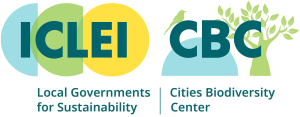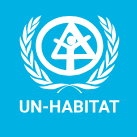Emphasising Ecosystems, Elevating People (3EP): Planning for “Rivers and People” in the Nairobi River Regeneration Initiative (NRRI)
Project Information
Emphasising Ecosystems, Elevating People (3EP) is a project that was led by Kounkuey Design Initiative (KDI) in partnership with UN-Habitat, Nairobi City County, and ICLEI Cities Biodiversity Centre. The project aimed to rediscover and regenerate Nairobi’s natural assets along the city’s river system, with a focus on the Ngong River Basin, in order to reduce climate risks, increase biodiversity, and strengthen residents’ climate and socio-economic resilience.
The project worked in coordination with broader city-wide river regeneration initiatives, particularly in underserved and highly vulnerable settlements located along the river. It demonstrated how Ecosystem-based Adaptation (EbA) principles can be applied at different scales of participatory planning—from the neighbourhood to the city.
Key components of the project included basin-wide assessments, multi-stakeholder visioning processes, the co-production of “Rivers + People” (R+P) plans with communities in informal settlements, and the implementation of catalytic, community-driven climate adaptations. The project also built capacity in Kenya and across the East African region, generating evidence and learning on how EbA and broader nature-based solutions (NbS) can be applied in urban river regeneration.
The 3EP project was completed in January 2025, having made significant progress in advancing EbA and Nature-based Solutions (NbS) for river regeneration in Nairobi. Implemented in a challenging and often politicised environment, the project combined capacity building, participatory planning, and catalytic interventions to strengthen both community resilience and institutional collaboration.
Throughout its implementation, 3EP reinforced the importance of grassroots-first approaches, while also exposing the political complexities surrounding river governance in Nairobi. Despite these challenges, the project leaves behind stronger community–government linkages, tangible NbS interventions, and valuable knowledge that will continue to shape river regeneration efforts in Nairobi and beyond.
Project Achievements
1. Strengthened Local Capacity for Sustainable River Management: Delivered four workshops that strengthened the knowledge and skills of government officials, civil society organisations, and riverine communities in applying EbA and NbS for sustainable river management. These workshops brought together diverse institutions, professionals, and community actors in a rare moment of multi-stakeholder alignment.
2. Built a Shared, Inclusive Vision for the Ngong River Basin: Facilitated the co-development of a shared vision for the Ngong River Basin, bringing together community representatives, government institutions, professionals, and civil society to build consensus and foster collaboration.
3. Advanced Neighbourhood-Level Planning: Co-created R+P Plans for Mukuru and Kibera. While the Mukuru plan became outdated due to demolitions, the Kibera R+P Vision Plan and accompanying Kibera community manifesto continue to provide a strong foundation for inclusive and people-centred river regeneration.
4. Delivered a Catalytic NbS Demonstration in Mukuru: Designed and constructed the Mukuru Riverfront Public Space, a thriving intervention that improved floodwater management, enhanced child safety and access, and created much-needed public space while providing practical training in NbS construction and maintenance.
5. Expanded Influence and Knowledge Sharing: Extended the R+P approach to inform a green infrastructure plan in Embu County and contributed lessons learned to regional and international dialogues, shaping policy discussions on river regeneration and climate adaptation.
Project Status
Completed – 31 January 2025
Key Metrics
Implemented By:
Kounkuey Design Initiative, Inc. (KDI)

in partnership with: ICLEI Cities Biodiversity Center

and: UN Habitat

